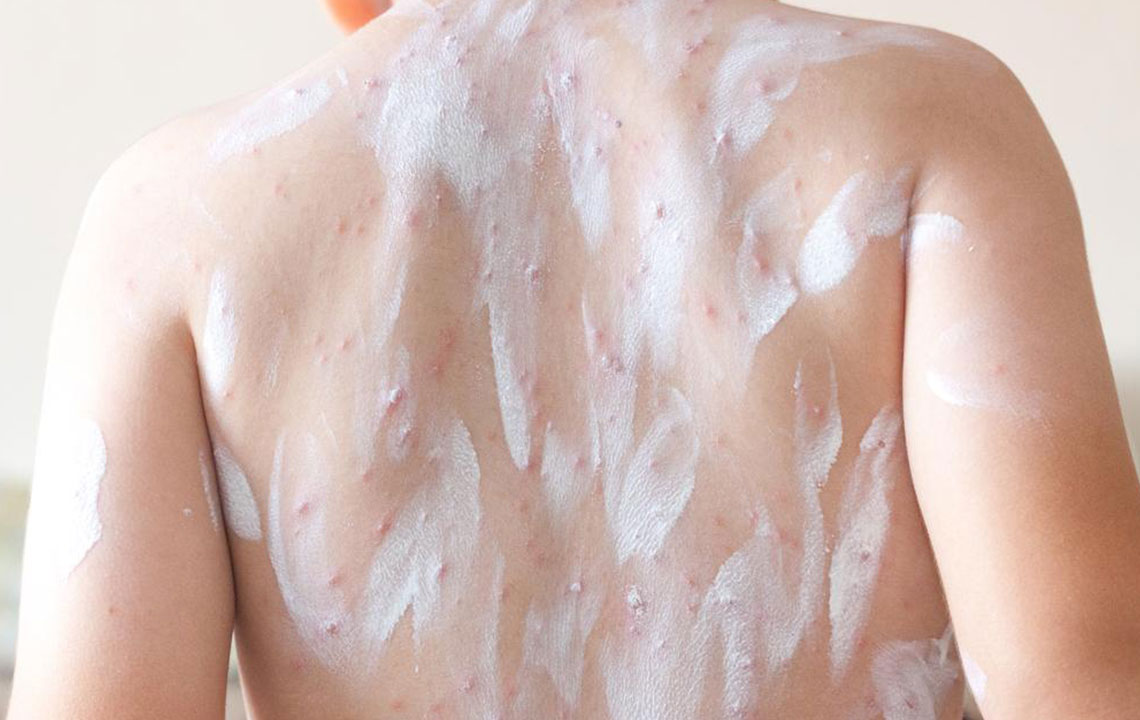Atopic Dermatitis – Treatment Options That Can Be Tried at Home

Atopic dermatitis is an unusual skin condition which causes strong itching and leads to the formation of red rashes. In some cases, these red rashes form bumps which look much similar to blisters.
It can be a long-term chronic skin problem for some people and requires a combination of treatments. When infants suffer from this problem, it affects their cheeks, front portion of knees, and the back of their elbow. Atopic dermatitis is also known as eczema or atopic eczema.
For atopic dermatitis, treatment varies as per the condition and usually depends on the kind of rash that a person has. People who have mild cases of atopic dermatitis can be treated at home and can use skin barrier repair moisturizers. When used on a regular basis, these moisturizers help in controlling the itching in a span of three-weeks.
Serious rashes including oozing rashes which have fluid-filled sores that cause fluids to ooze out might require medical intervention. This kind of rash indicates the presence of skin infection and adequate treatment might be needed. Similarly, scaly dry and itchy rashes might also need medical help.
If severe rashes persist, doctor’s intervention might be needed, and the patient would be required to use bleach bath and wet wraps. If medical treatment is sought at an early stage, it will help the situation from turning worse.
In case the rashes do not get better with time, it requires some medical intervention, and the treatment might include the following:
– Use of topical corticosteroids or oral corticosteroids is advised. These can be used in situations when rashes cover a large area of the body. Similarly, these can also be used in the case of serious skin infections.
– Another treatment option is to use a bandage or dressing which is usually wrapped around the skin that has been affected. Open sores get covered through this technique, and it helps in limiting contact of the area with air.
– Treatment course also includes exposure to ultraviolet light. This option involves the use of psoralen plus ultraviolet A (PUVA) therapy and is considered to be an effective atopic dermatitis treatment option.
In severe cases of atopic dermatitis, hospitalization might be required. Short stay in the hospital and effective care also helps in the condition getting better with the course of time.
Atopic dermatitis treatment at home
Atopic dermatitis treatment can also be initiated at home, and this includes taking care of the skin by simultaneously avoiding things and situations which lead to the development of this condition. The following atopic dermatitis treatment options can be considered.
Taking care of the skin
The skin needs to be kept hydrated. This can be done by bathing in warm water. Application of moisturizer afterward will help. Additionally, people who suffer from this health complication should also avoid the use of things that irritate the rashes. These could be soaps which cause dryness of the skin and perfumes which can irritate the skin.
Allergens like dust mites and animal dander should be avoided as these lead to rash formation.
Controlling itching and scratching
The fingernails should be trimmed so that the skin does not get damaged when scratching. The patient can also use protective dressing as scratching the affected area will then be limited. If a child is affected by atopic dermatitis, cotton socks can be put on the hands, and this will help them not to scratch the affected area.
Avoiding getting out in the sun
People who suffer from atopic dermatitis should avoid getting out in the sun. Getting exposure to intense sunlight can lead to sunburns in such cases. When using a sunscreen, it is recommended that a sensitive sunscreen should be used.
Stress to the skin should also be reduced as this also prevents the rashes from getting worse. Relaxation techniques and behavior modification are some of the other natural techniques which can be tried as an atopic dermatitis treatment option.
Medications for atopic dermatitis
Medications for atopic dermatitis can also be used for preventing the condition from getting worse. These will help control the itching and will then heal the rashes. Mild itching might be controlled without the use of medicines; however, serious complications do require the use of some medications under the guidance of a trained doctor.
Ointments and creams can also be applied to the rashes which will eventually help in getting much-needed relief. Tropical corticosteroids are considered to be the most effective atopic dermatitis treatment and can help in removal of rashes. Antihistamines are also known as an atopic dermatitis treatment option. However, any atopic dermatitis treatment, when initiated through the use of Antihistamines, should be carried under medical supervision.
A doctor’s recommendation becomes vital when these medications are being used for treating children since the skin of the child is very sensitive, and any overuse of these medications will have a detrimental effect on the children.


